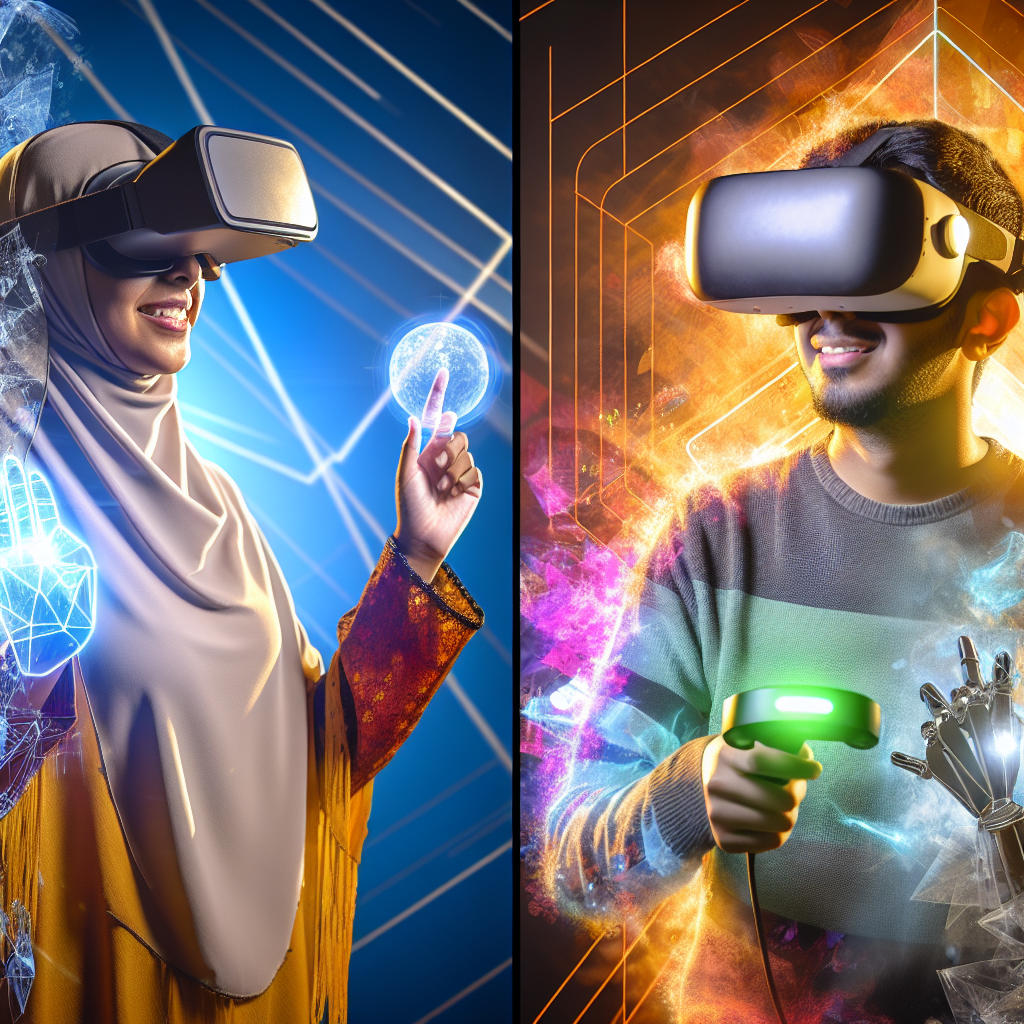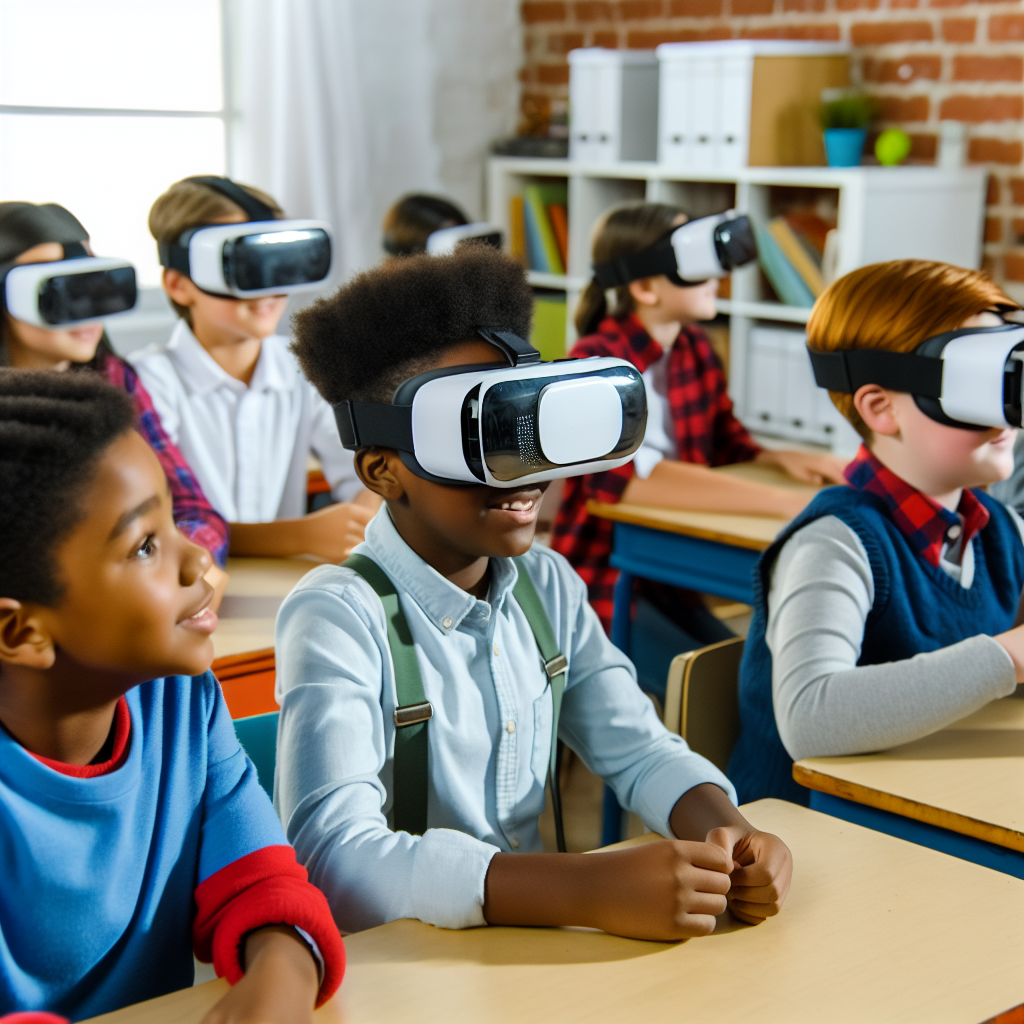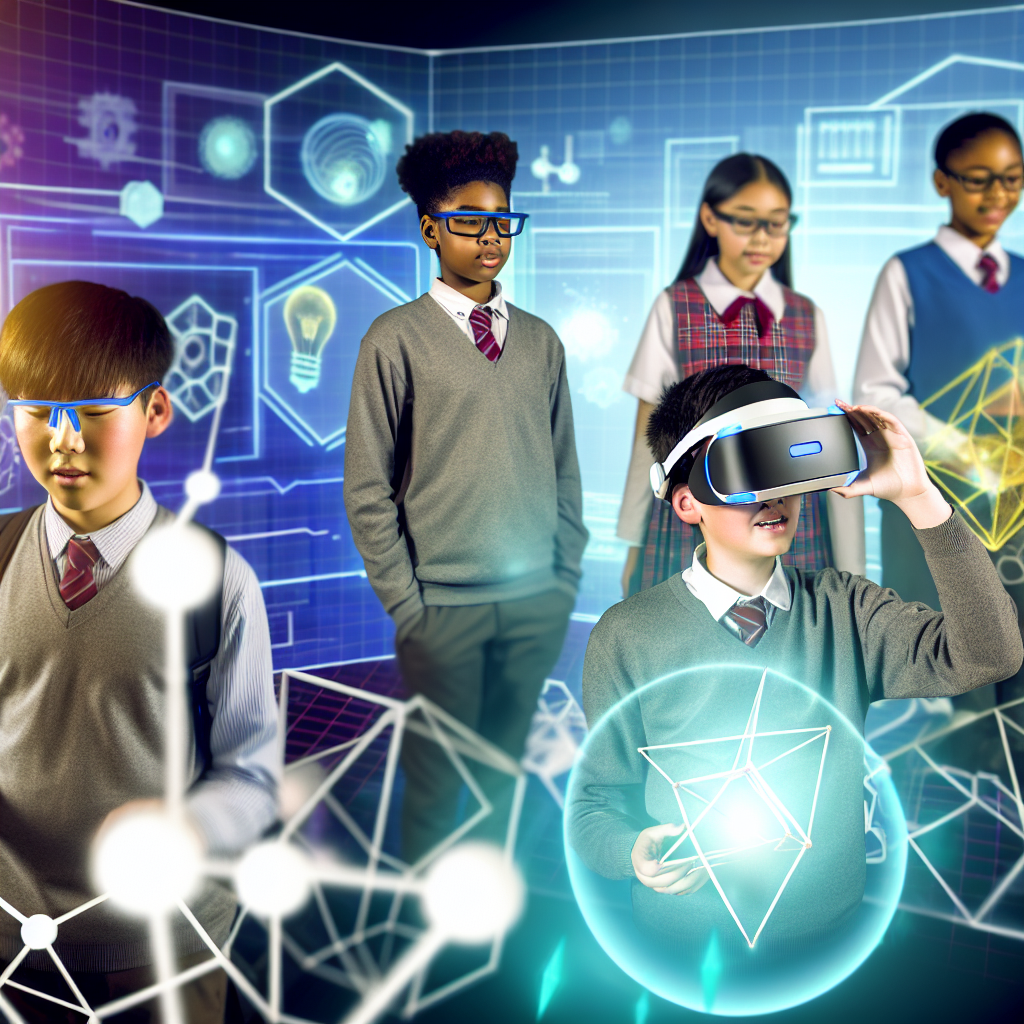AR and VR are revolutionizing education and training by providing immersive and interactive learning experiences, enhancing engagement and motivation, and improving learning outcomes. These technologies cater to different learning styles, bridge the gap between theory and practice, and prepare students for success in a digital world.
In recent years, the integration of Augmented Reality (AR) and Virtual Reality (VR) technologies into education and training programs has been nothing short of revolutionary. These immersive technologies have opened up new possibilities for how students and professionals learn and develop their skills. In this article, we will explore the rise of immersive learning and how AR and VR are transforming education and training. We will also delve into the differences and similarities between AR and VR in educational applications, the benefits of incorporating these technologies into training programs, and how they are shaping the classroom of tomorrow. Join us as we navigate the exciting future of education with Augmented Reality and Virtual Reality.
- 1. The Rise of Immersive Learning: How Augmented Reality and Virtual Reality are Revolutionizing Education and Training
- 2. Augmented Reality vs. Virtual Reality: Understanding the Differences and Similarities in Educational Applications
- 3. Enhancing Learning Outcomes: The Benefits of Incorporating AR and VR into Training Programs
- 4. Navigating the Future of Education: How Augmented Reality and Virtual Reality are Shaping the Classroom of Tomorrow
1. The Rise of Immersive Learning: How Augmented Reality and Virtual Reality are Revolutionizing Education and Training

In recent years, the rise of immersive learning technologies such as Augmented Reality (AR) and Virtual Reality (VR) has revolutionized the way education and training are delivered. These technologies have the potential to transform traditional learning methods by providing a more engaging and interactive experience for students and trainees.
Augmented Reality overlays digital information onto the real world, allowing users to interact with virtual objects in their physical environment. Virtual Reality, on the other hand, creates a completely immersive digital environment that users can explore and manipulate. Both AR and VR technologies have been successfully integrated into education and training programs, enhancing the learning experience for students and improving retention rates.
One of the key advantages of immersive learning is its ability to simulate real-world scenarios in a safe and controlled environment. For example, medical students can practice surgical procedures in a virtual operating room, while employees can undergo virtual training simulations for emergency response situations. This hands-on approach to learning allows students and trainees to gain practical experience and develop critical skills in a risk-free setting.
Furthermore, immersive learning technologies have been shown to increase engagement and motivation among learners. By incorporating gamification elements and interactive features, AR and VR can make the learning process more enjoyable and rewarding. This can lead to improved learning outcomes and a deeper understanding of complex concepts.
Overall, the rise of immersive learning through Augmented Reality and Virtual Reality has the potential to transform education and training as we know it. By providing a more engaging, interactive, and realistic learning experience, these technologies are paving the way for a new era of immersive education and training.
2. Augmented Reality vs. Virtual Reality: Understanding the Differences and Similarities in Educational Applications

Augmented Reality (AR) and Virtual Reality (VR) are two rapidly growing technologies that are revolutionizing the way we learn and train. While both AR and VR offer immersive learning experiences, they have distinct differences in how they are used in educational applications.
Augmented Reality overlays digital information onto the real world, enhancing the physical environment with digital elements. This allows learners to interact with virtual objects in a real-world setting, making AR ideal for hands-on learning experiences. For example, medical students can use AR to practice surgical procedures on virtual patients or engineering students can visualize complex machinery in a 3D space.
On the other hand, Virtual Reality creates a completely immersive digital environment that users can interact with. VR isolates users from the real world, allowing them to fully focus on the virtual experience. This makes VR ideal for simulations and training scenarios that are too dangerous, expensive, or impractical to replicate in the real world. For instance, VR can be used to simulate a high-pressure sales pitch or emergency response training.
Despite their differences, AR and VR share a common goal of providing immersive and engaging learning experiences. Both technologies have the potential to transform education and training by making learning more interactive, personalized, and effective. By incorporating AR and VR into educational applications, educators can create dynamic and experiential learning environments that cater to individual learning styles and preferences.
3. Enhancing Learning Outcomes: The Benefits of Incorporating AR and VR into Training Programs

Incorporating Augmented Reality (AR) and Virtual Reality (VR) into training programs can greatly enhance learning outcomes and provide numerous benefits for both educators and learners. By providing immersive learning experiences, AR and VR technologies can help engage students and trainees in a more interactive and stimulating way.
One of the key benefits of incorporating AR and VR into training programs is the ability to provide hands-on, experiential learning opportunities. These technologies can simulate real-world scenarios and environments, allowing learners to practice and apply their skills in a safe and controlled setting. This can help improve retention and understanding of complex concepts, as well as enhance problem-solving and critical thinking skills.
Additionally, AR and VR can cater to different learning styles and preferences, making it easier for educators to personalize instruction and accommodate the needs of individual learners. By providing a more interactive and engaging learning experience, these technologies can increase motivation and interest in the subject matter, leading to improved learning outcomes.
Furthermore, AR and VR can also help bridge the gap between theory and practice, allowing learners to visualize and interact with abstract concepts in a more tangible way. This can help make learning more meaningful and relevant, leading to a deeper understanding and retention of information.
Overall, the incorporation of Augmented Reality and Virtual Reality into training programs can revolutionize the way education and training are delivered, providing a more immersive and engaging learning experience that can lead to improved outcomes for both educators and learners.
4. Navigating the Future of Education: How Augmented Reality and Virtual Reality are Shaping the Classroom of Tomorrow

Augmented Reality (AR) and Virtual Reality (VR) are revolutionizing the way education and training are delivered, offering immersive learning experiences that engage students in ways never before possible. These technologies are shaping the classroom of tomorrow by providing interactive and hands-on learning opportunities that cater to different learning styles and preferences.
In the future, AR and VR will enable students to explore historical events, scientific concepts, and even complex mathematical equations in a way that feels real and tangible. By creating virtual environments that simulate real-world scenarios, educators can enhance the learning experience and make abstract concepts more understandable and relatable.
With the use of AR and VR in education, students can also collaborate with their peers in virtual spaces, breaking down geographical barriers and fostering a sense of community and teamwork. This interactive and social aspect of immersive learning can enhance student engagement and motivation, leading to better retention of information and improved learning outcomes.
As we navigate the future of education, it is clear that Augmented Reality and Virtual Reality will play a crucial role in shaping the classroom of tomorrow. By leveraging these technologies, educators can create dynamic and personalized learning experiences that cater to the diverse needs of students, ultimately preparing them for success in an increasingly digital and interconnected world.
In conclusion, the rise of immersive learning through Augmented Reality (AR) and Virtual Reality (VR) has revolutionized education and training by providing interactive and engaging experiences for learners. By understanding the differences and similarities in educational applications of AR and VR, educators can effectively enhance learning outcomes and improve training programs. As we navigate the future of education, it is clear that AR and VR are shaping the classroom of tomorrow, offering limitless possibilities for immersive learning experiences. With the continued development and integration of AR and VR technologies, the potential for transforming education and training is endless. Embracing these innovative tools will undoubtedly play a crucial role in preparing learners for success in a rapidly evolving digital world.





